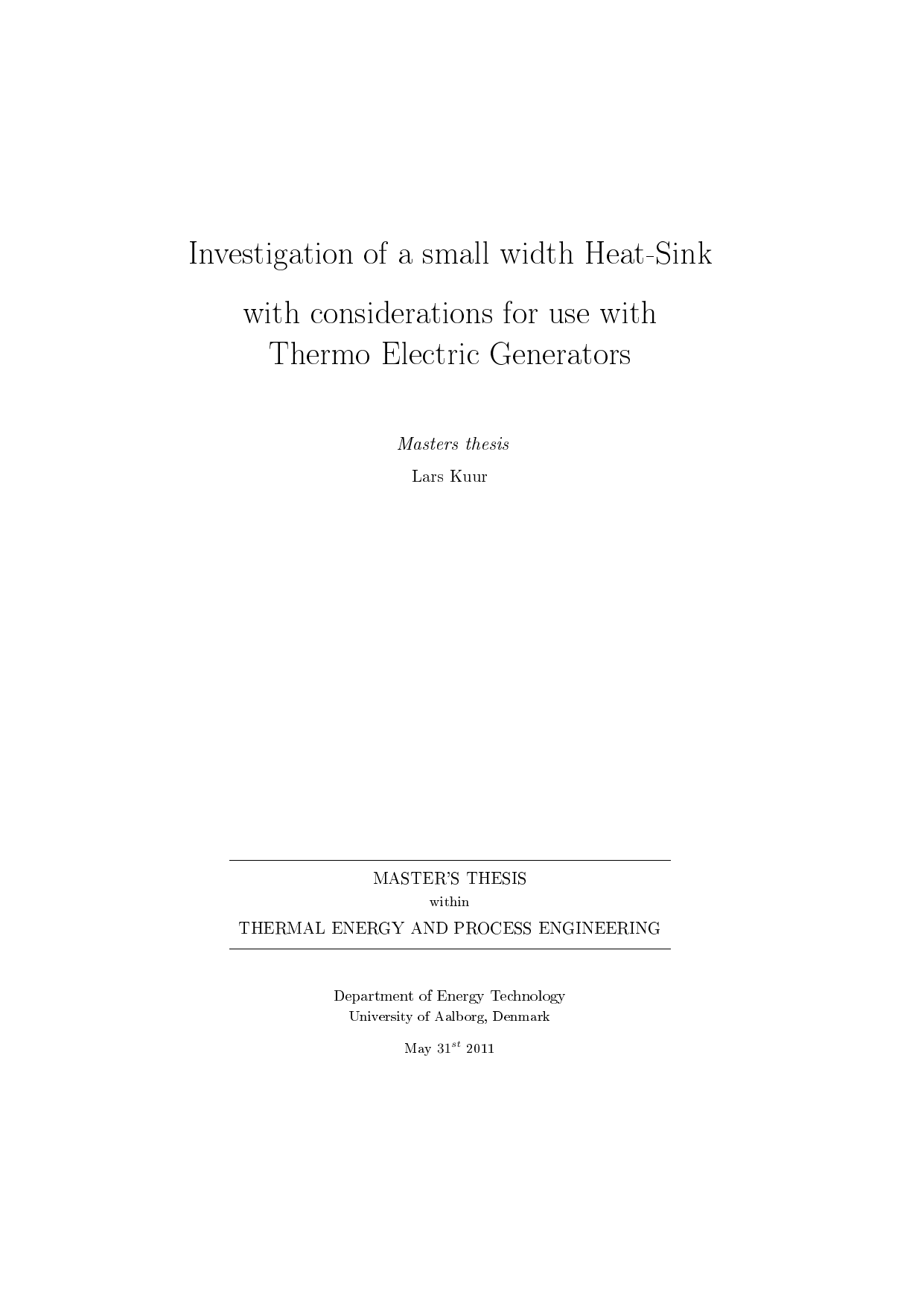
Investigation of a small width Heat-Sink with considerations for use with Thermo Electric Generators
Translated title
Author
Term
4. term
Education
Publication year
2011
Submitted on
2011-06-01
Pages
42
Abstract
This masters thesis investigates the phenomena related to microchannels and discuses how these can be used with Thermo Electric Generators. State of the art of the system level TEG is dis- cussed and a number of methods for choosing the optimal heat sink design is discussed. An experi- ment is performed on a mini channel to investigate the ow phenomena's related to the small dimen- sions. This is done in two ways, rst an integral approach where UA values are determined and ex- isting correlations compared to the measured av- erage Nusselt number. And again with a novel experimental design involving Particle Image Ve- locimitry and Planar Laser Induced Fluorescence. This way it is tried to determine the local Nus- selt values with direct and non-intrusive measur- ing methods. It is concluded that it is possible to resolve both the thermal and hydrodynamical boundary layers but not to a degree of precision that allows determination of the Nusselt number. A number of suggestions are made for further im- provements.
This masters thesis investigates the phenomena related to microchannels and discuses how these can be used with Thermo Electric Generators. State of the art of the system level TEG is dis- cussed and a number of methods for choosing the optimal heat sink design is discussed. An experi- ment is performed on a mini channel to investigate the ow phenomena's related to the small dimen- sions. This is done in two ways, rst an integral approach where UA values are determined and ex- isting correlations compared to the measured av- erage Nusselt number. And again with a novel experimental design involving Particle Image Ve- locimitry and Planar Laser Induced Fluorescence. This way it is tried to determine the local Nus- selt values with direct and non-intrusive measur- ing methods. It is concluded that it is possible to resolve both the thermal and hydrodynamical boundary layers but not to a degree of precision that allows determination of the Nusselt number. A number of suggestions are made for further im- provements.
Documents
